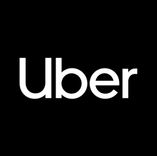
Uber Product Designer Case Interview: Two‑Sided Marketplace and Safety Experience
This 60‑minute, facilitator‑led case mirrors Uber’s real product design exercises and emphasizes designing for a global, two‑sided marketplace across Mobility, Delivery, and Merchants. You will be given an ambiguous prompt grounded in Uber scenarios (e.g., improve rider pickup reliability at congested airports; reduce courier wait time at busy merchants; increase order accuracy in grocery substitutions; enhance nighttime safety signals for riders and drivers) and asked to: 1) Frame the problem: Identify primary and secondary customers (riders, drivers/couriers, eaters, merchants, ops), clarify constraints (airport/venue rules, GPS accuracy, device fragmentation, low connectivity, fraud/safety policies), and define success with quantifiable metrics (e.g., ETA accuracy, cancellation/abandon rates, on‑time pickup %, courier idle time, order accuracy, contact rate, NPS/CSAT, incident rate). 2) Explore solution directions: Produce lean flows/wireframes for key moments (discovery, decision, confirmation, real‑time status, exception handling) and show systems thinking—how UI, policy, incentives, and real‑time signals (location, traffic, queueing, inventory) interact. Consider platform nuances (iOS/Android, driver vs. rider vs. merchant apps), accessibility, localization, and privacy/safety affordances. 3) Deep dive on marketplace trade‑offs: Discuss latency vs. clarity, supply/demand balance, fairness to drivers/couriers and merchants, and operational complexity. Call out edge cases (airport geo‑fences, multi‑stop trips, store substitutions/out‑of‑stock, unassigned couriers, spoofed GPS, low‑battery/offline states). 4) Define measurement and iteration plan: Propose an A/B test with north‑star and guardrail metrics (e.g., conversion, cancellations, completion rate, earnings variability, contact‑rate to support) and outline how you’d partner with PM, Eng, DS, and Ops to ship a v1 and improve. 5) Communicate clearly: Expect to narrate reasoning, make principled trade‑offs, and tie decisions to Uber’s culture of speed, customer obsession across all sides of the marketplace, data rigor, operational excellence, and safety. The interviewer will probe for your ability to prioritize, reason with data, and design pragmatically for scale. Format guide (typical flow): - 5 min: Prompt read + clarifying questions - 10 min: Problem framing, personas, metrics - 20 min: Solution exploration (flows/wires) - 10 min: Trade‑offs, edge cases, safety - 10 min: Metrics, experiment, rollout, risks - 5 min: Recap/Q&A What’s assessed: problem framing, systems/marketplace thinking, interaction design depth, data fluency and metrics, handling ambiguity, collaboration signals, and safety‑by‑design thinking.
60 minutes
Practice with our AI-powered interview system to improve your skills.
About This Interview
Interview Type
PRODUCT SENSE
Difficulty Level
4/5
Interview Tips
• Research the company thoroughly
• Practice common questions
• Prepare your STAR method responses
• Dress appropriately for the role